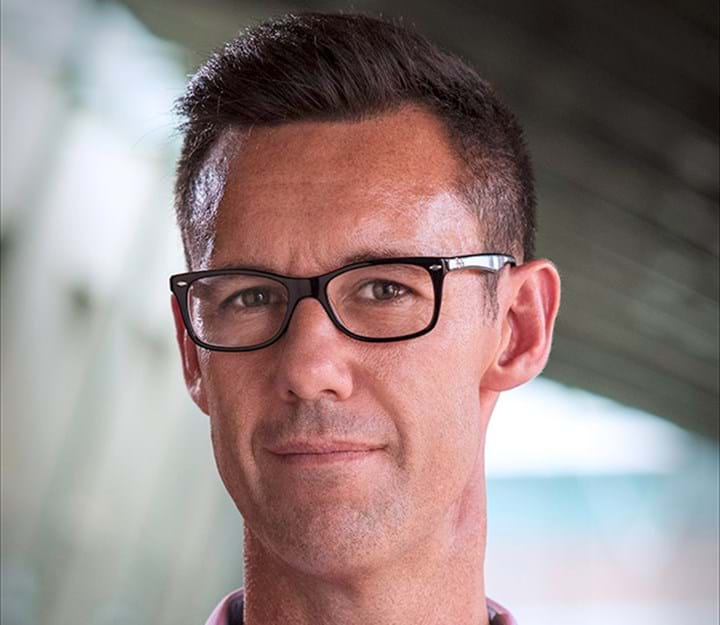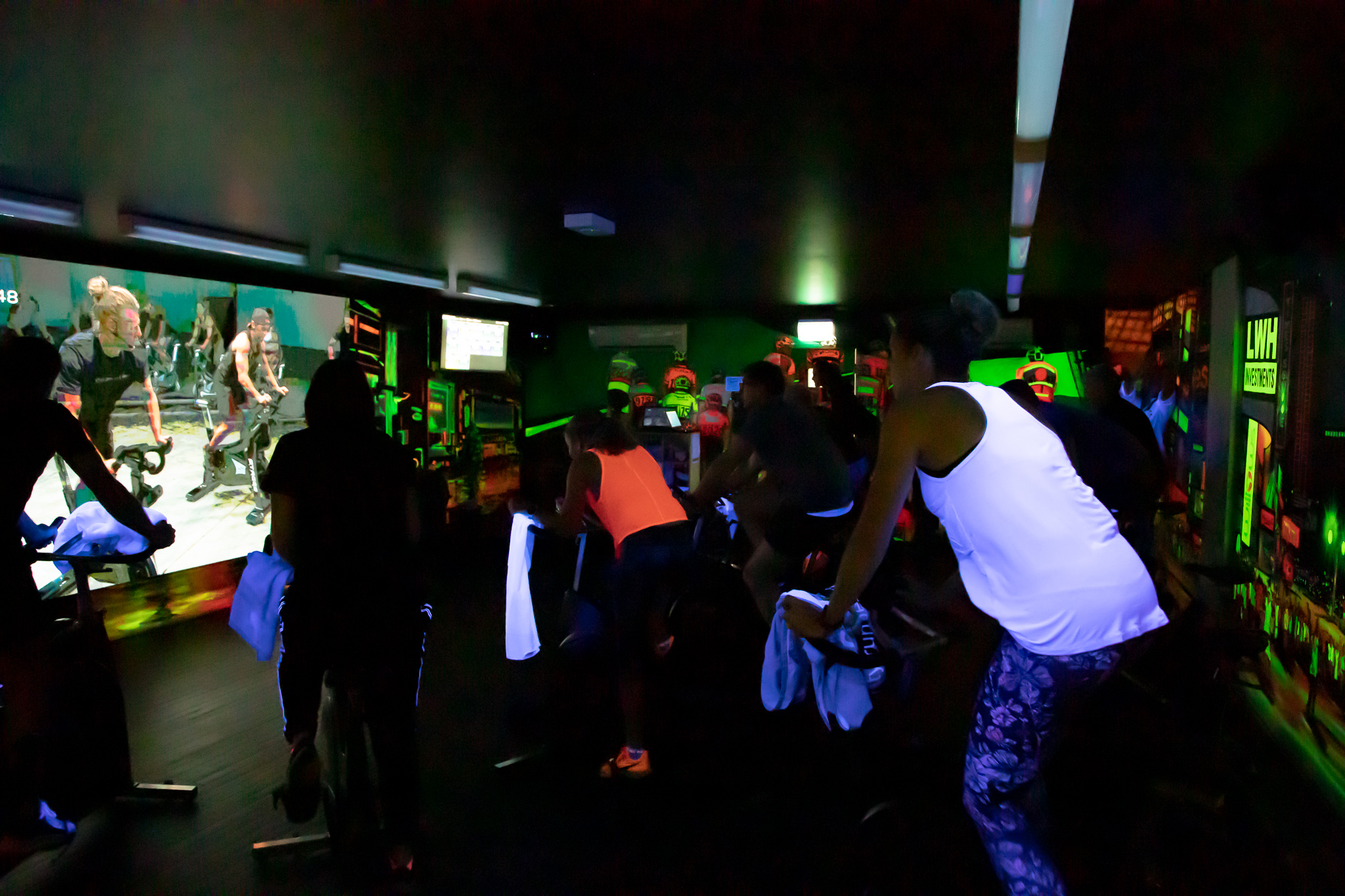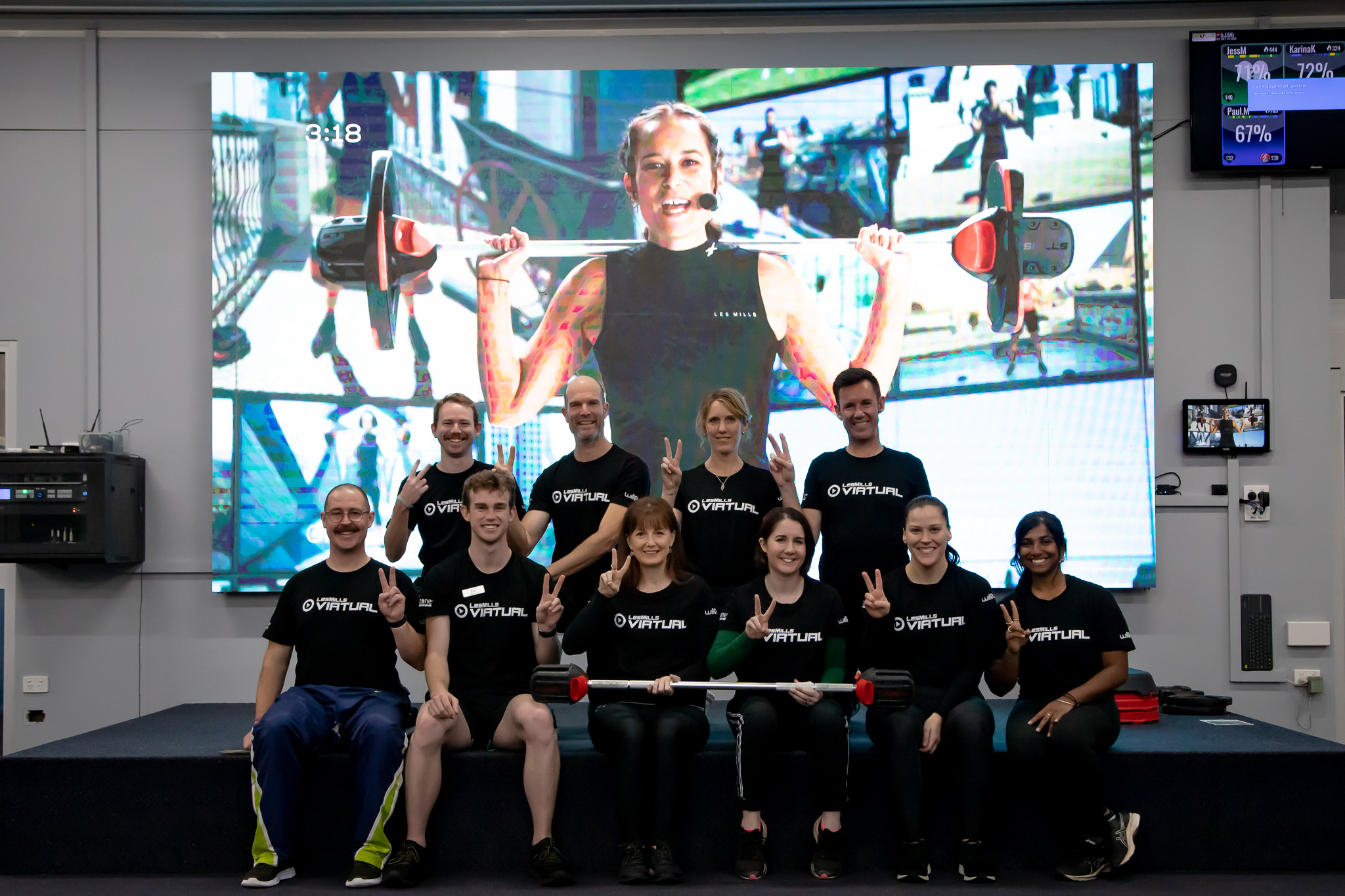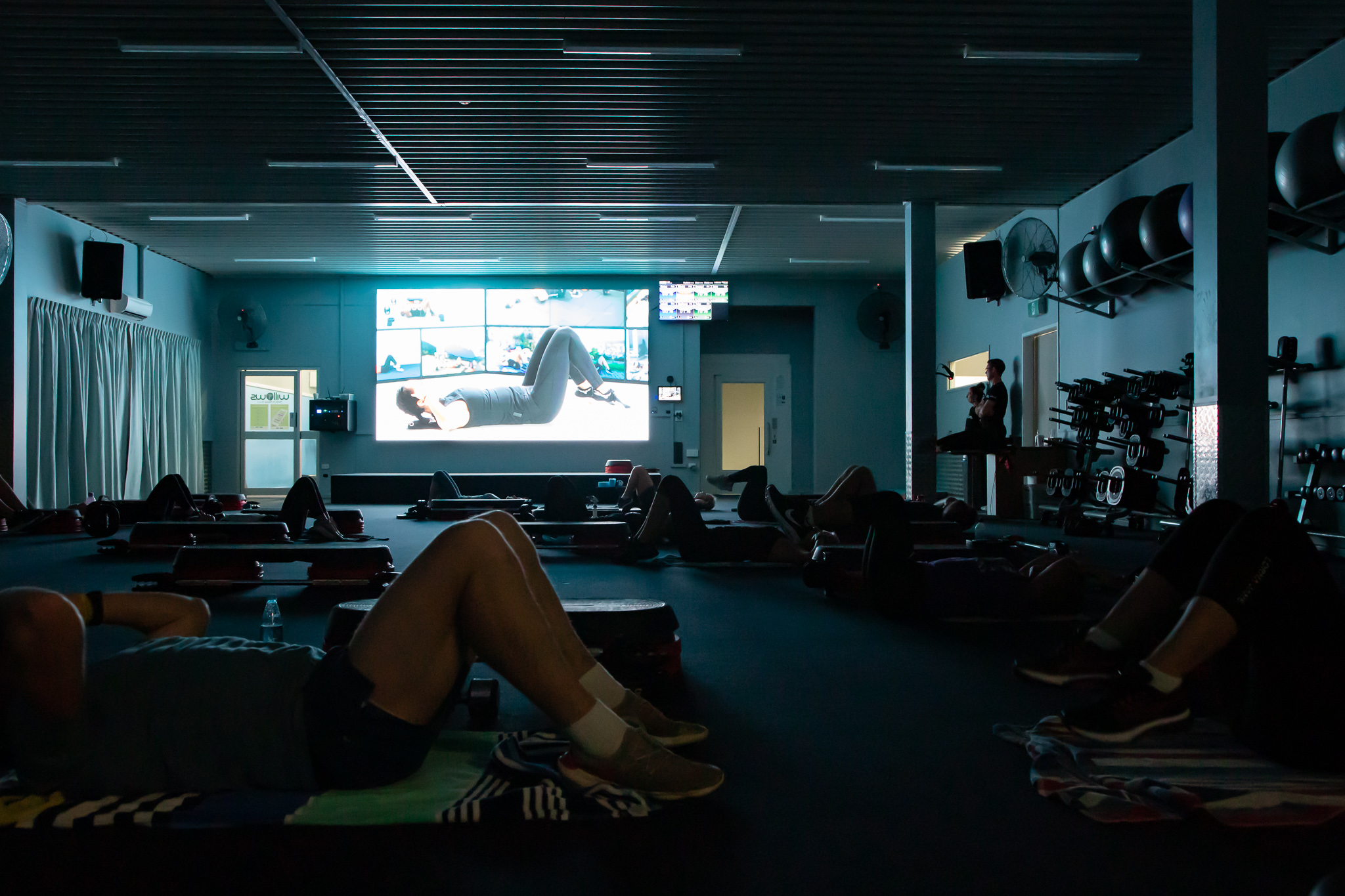
Hi Troy, how would you describe your club?
Troy Morgan (TM): Willows Health and Lifestyle Centre is an icon in Toowoomba, Queensland, having been part of the community since the 1970s. Fourteen years ago, we converted it from an old squash and fitness centre into a more traditional fitness centre by turning the squash courts into specific studios for cycling, yoga and Pilates. We’ve been a long-time partner of Les Mills Asia Pacific and we’ve really become known for our group exercise offering in that time, so it's been a great partnership. We’ve also since incorporated allied health practices (i.e., physiotherapists, speech therapists, occupational therapists, dietitians, psychologists), so there’s a real mix of expertise all under one roof.
As a community centre, we don’t have traditional gym contracts, but pre-COVID we had around 2,500 members, and we’ve managed to build that back up pretty well after the lockdowns. Currently, we’re sitting at around 1,700 base members, and then we have medical centres and schools using our facilities, which means we see well over 2,000 members coming into the centre at the moment.

How are you using technology to enhance your offering?
TM: We really want technology to be part of our members’ everyday fitness experience, as well as our support system, which means we need to incorporate more technology into what we offer. This is so our face-to-face experiences become much easier for both our coaches and our group fitness Instructors, and to support the customers’ experience. We’ve recently rolled out Virtual across our studios and see this as a big component of using technology to provide members with the flexibility to work out on their terms.
How has Virtual fared so far?
TM: We launched LES MILLS Virtual in our main studio last year – having launched our Virtual in our cycle rooms with RPM™ and SPRINT™ five months earlier. Both launches were received really well and have proved a big drawer among our members. We’ve got 22 bikes in our cycle studio and in the first five months since implementing LES MILLS Virtual, visits have grown by 26 per cent. So it will be really interesting to see what happens in the long-term now we’ve recently added Virtual in our 30-person main studio as well.
The reception to this latest launch was also fantastic, and the key to that was the support and advice provided by Les Mills Asia Pacific. We understand that Virtual should be provided as a supplement to our current fitness offering, rather than as an alternative or something that will take over or replace the existing classes. Once you clearly convey this message and ensure it’s understood by your members, your team, and your community, it really works.

What’s been the impact on your membership since launching Virtual?
TM: What we've actually found is that Virtual brings in a lot of new people to group fitness, who weren’t already used to the face-to-face experience. This means we need to educate our personal trainers and gym floor instructors about how to incorporate Virtual into the everyday for members, and how it can supplement what they are already doing.
We’ve programmed Virtual into our timetables and it’s surprised us how quickly its popularity has grown – and also how the members have been using it. At the start, we had waiting lists for the Virtual classes, but the members have now started to understand that in addition to the timetabled Virtual classes, they can also come in anytime to do any class they want to. The waiting list is still very full, but it is starting to decrease now they understand they’re not tied to a timetable and so are coming in at all times of the day to do their favorite classes. Some people bring in their business partners and they’ll do a SPRINT workout before going off for breakfast. Others come with groups of friends or even use it for networking – and all at a time that suits them.
We’ve also been really surprised by how encouraging and supportive the local schools have been. They come in with groups of students during the day to experience group fitness and they absolutely love it. In fact, I hear the students love SPRINT so much that they can’t wait to return from school holidays so they can get back into it and other group fitness classes! Another school has signed up all their boarding students for weekend memberships – so they bus them up to use the Virtual studios at 1pm on Saturdays and Sundays.
So what’s the secret to a successful rollout?
TM: The key is to incorporate Virtual into your overall offering and clearly convey exactly how that actually supplements what your members and staff are already doing. Clear communication is essential to alleviate the fear among group fitness Instructors that they’ll be out of a job – that’s the last thing we would want to happen! There’s also often fear from the core group fitness members, who worry that their beloved in-person classes will be replaced by Virtual. But again, we’re never going to do that!
Despite our other services operating with booking systems, at the moment we offer Virtual classes on a first-come, first-served basis. What we’ve found is that people are actually quite happy to wait, or jump in halfway through and then do the group fitness class they wanted to do after that. With the SPRINT cycle classes, most people are quite happy to just join in, spin the wheel until the other person’s class is finished, and then go again in the class they want. And even if they don’t book in advance, members still need to scan in, so we’re always collecting numbers around usage. We’re very data-driven, so our technology ecosystem is designed to track everything. This enables us to identify and monitor the ‘stickability’ of a member once they start to use more of our services.

Did you have any challenges during the rollout of Virtual?
TM: Addressing pushback or misconceptions from members or staff was a critical element for the successful introduction of Virtual. It’s great that our members are very loyal to their favorite group fitness Instructors, but of course with any change comes an element of fear. Recognising this, it was very important for us to convey a very clear message that for those who are used to face-to-face classes, nothing has to change. The timetable remains the same; and this was very important to emphasize – particularly at the start.
Equally important was a really big engagement piece for our Instructors, explaining how it will enhance their programs because more people engage with group fitness and graduate into face-to-face classes when they’re ready – as we’ve seen occur in our cycle classes. At our Virtual launch it was great to see the BODYPUMP™ and BODYBALANCE™ Instructors all being a part of the experience by doing the classes with members and helping them out.
We had one member, who was steadfastly devoted to face-to-face classes, tell us in no uncertain terms that offering Virtual cycling was the worst thing we could do; only to come back three weeks after it launched to tell us that it was the best thing we’d done in 14 years!

What was the fit-out like for adding Virtual into your studios?
TM: The Group Fitness Management Training Course, talks about “building the stadium” – meaning creating a place where people want to come to workout, and delivering great content to keep them coming back. Part of our “stadium” is the high quality screen we use in our Virtual studios – it’s a sizable investment but it pays off because of the major role it has in creating a premium experience. The screen and the content are really important because it has to be different from your normal group fitness classes – and we really market that cinematic aspect of experience. When you enter the Virtual studio, there are theater curtains on the windows, so it’s dark and immediately feels different to the usual face-to-face group fitness experience. For Virtual to really work, it can’t just be four white walls with a data projector – you need a premium screen, great content, as well as high-quality sound and lighting.
What have been some of your other key learnings?
TM: Keep.me [our CRM software] took 14 years of our data to create algorithms to risk-stratify our membership base. This enables us to track the habits of every single member and even predict when a member might leave us, before they do so. We can also predict which areas of the business centre will keep our members longer.
When it comes to Keep.me’s risk-stratification scores, the closer to 100, the more likely a member is to stay. The data showed us that Willows is actually a very strong group fitness centre. Our score across the center average is 60, but with group fitness our score is 78. Before this, I hadn’t realised exactly how strong or how much longer those members were staying – up to 18 months longer, in some cases. So this data has really driven our investment in our group fitness offerings – particularly with Virtual. We know we’ll get a return on investment because of the significant impact group fitness has on life-time member value.
The satisfaction of our members is really important for us. Net Promoter Score (NPS) data can also be kept in the Keep.me system, so we can also see that member satisfaction is high among group fitness members. The data really identified for us that we are, in fact, a group fitness centre, more so than a cardiovascular and weights room facility.
How has Virtual helped you adapt during the pandemic?
TM: COVID certainly accelerated our plans, because the way people work and the hours they work changed very quickly. As a result, the traditional face-to-face fitness timetable wasn't quite creating the type of experience that members were expecting or wanting anymore – but Virtual bridges the gap. For example, on Tuesday at 1pm I was doing a Virtual SPRINT class, and I was joined by someone who was working from home because that was their lunch break. Virtual has the power to meet people where they want or need it to. It fits in with how their life now works, which in many cases, is vastly different to how it used to be.
It’s a fascinating time to see how significantly people's patterns of work have changed. In Toowoomba, there haven't been significantly hard or extended periods of lockdown, but in markets where things have been closed for a long time, or in areas where there are lots of global business headquarters, people's work and life patterns have dramatically changed. These people don’t go to the gym at 6am Monday to Friday any more, because their life is no longer structured like that. So there are huge opportunities, but also significant challenges in the short-term for our industry, and I believe Virtual can help on both fronts.
TRANSFORM YOUR CLUB WITH VIRTUAL
Want to learn more about LES MILLS Virtual can drive new memberships for your club?
DISCOVER HERE